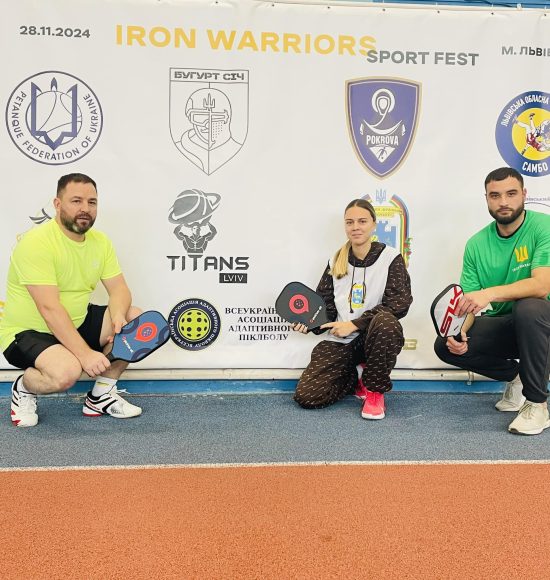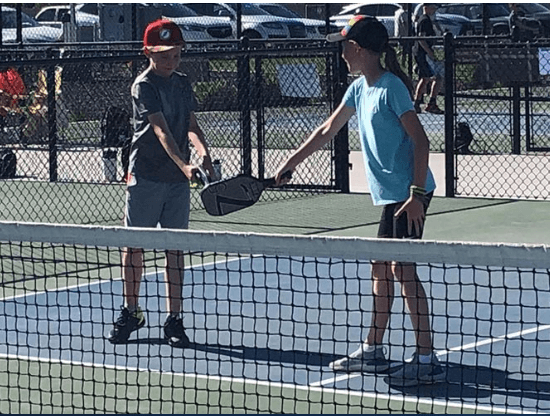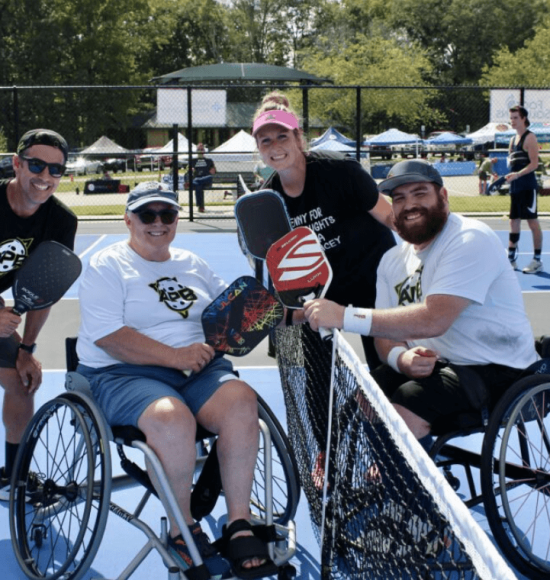Youth Engagement
Pickleball is not just a game – it’s an excellent tool for the physical, social, and emotional development of young people, promoting an active and healthy lifestyle.
Physical Skill Development
Improves coordination, balance, and reaction speed.
Builds endurance and muscle strength while being gentle on the joints.
Suitable for all fitness levels and helps reduce the risk of injury.
Enhances strength and mobility, making daily tasks easier and lowering the risk of future injuries.
Social Interaction and Teamwork
Helps build friendships and encourages teamwork.
Teaches respect for opponents and fair play.
Brings together people of different ages and backgrounds, creating opportunities for intergenerational communication.
Mental Health and Stress Resilience
Helps reduce stress levels and improves emotional well-being.
Aids in coping with anxiety and depression through active movement and the positive atmosphere of the game.
Develops self-discipline, responsibility, and self-confidence.
Accessibility and Ease of Learning
Easy to learn, even for those who have never played sports.
Doesn’t require expensive equipment or special physical conditions.
Can be played on outdoor courts, in gymnasiums, or even in schoolyards.
Opportunities for a Sports Career
Provides a chance to participate in national and international tournaments.
Opens up possibilities for sports scholarships or a professional career.
Encourages the development of leadership skills and self-assurance.
Promoting a Healthy Lifestyle
Encourages regular physical activity.
Distracts from a sedentary lifestyle, gadgets, and harmful habits.
Teaches youth the importance of movement and healthy recreation.
Pickleball for Everyone
Kyiv
-
Podolsky Club
56A Yaroslavska St.
Saturday 12:00–14:00 -
Sports Arena
23-A Lesi Ukrainky St.
Tuesday 14:00–16:00
Thursday 14:00–16:00 -
Kyiv Racket Sport Park
25 Kyoto St.
Wednesday 16:00–18:00
Saturday 16:00–18:00
Adaptive Pickleball (Free Training):
Kyiv
-
SK Meridian
11V Heroiv Sevastopolya St.
Tuesday 8:00–9:00
Thursday 8:00–9:00
Odesa
-
9СК
12 Seminarska St.
Monday: 15:30 – 17:00
Wednesday: 15:00 – 16:30
Friday: 16:15 – 18:00
Benefits of Introducing Pickleball and Adaptive Pickleball into the School Curriculum
Inclusivity and Equal Access
Pickleball is suitable for all students, regardless of their physical abilities, skill level, or health conditions.
It allows children with physical disabilities to participate using wheelchairs or special adaptations.
It helps integrate all participants into a shared game environment, fostering a culture of equality and mutual support.
Improvement of Physical Health
Develops coordination, balance, agility, and endurance.
Less injury-prone than tennis or badminton, and does not overload joints and muscles—crucial for growing bodies.
Helps prevent childhood obesity by encouraging physical activity.
Socialization and Teamwork Development
Fosters mutual respect, team spirit, and collaboration skills.
Includes students with varying levels of physical ability in shared activities, encouraging friendships and reducing bullying.
Teaches fair play, strategy, and cooperation—skills that are valuable not only in sports but in life.
Mental Health and Self-Regulation
Reduces stress levels, improves emotional well-being and concentration.
Contributes to the development of discipline, self-control, and patience, which supports the learning process.
Helps children with special educational needs become actively involved in school life.
Ease of Implementation
Simple rules make it easy to teach, even to younger students.
The game doesn’t require expensive equipment—just a few paddles, balls, and a marked court to get started.
Existing gyms or playgrounds can be used, requiring no major investment in infrastructure.
Opportunities for Sports Program Development
Opens up possibilities for students to participate in tournaments, interschool competitions, and national championships.
Encourages children to adopt a healthy lifestyle and stay involved in sports beyond school.
Helps prepare future coaches, PE teachers, and professional athletes.




